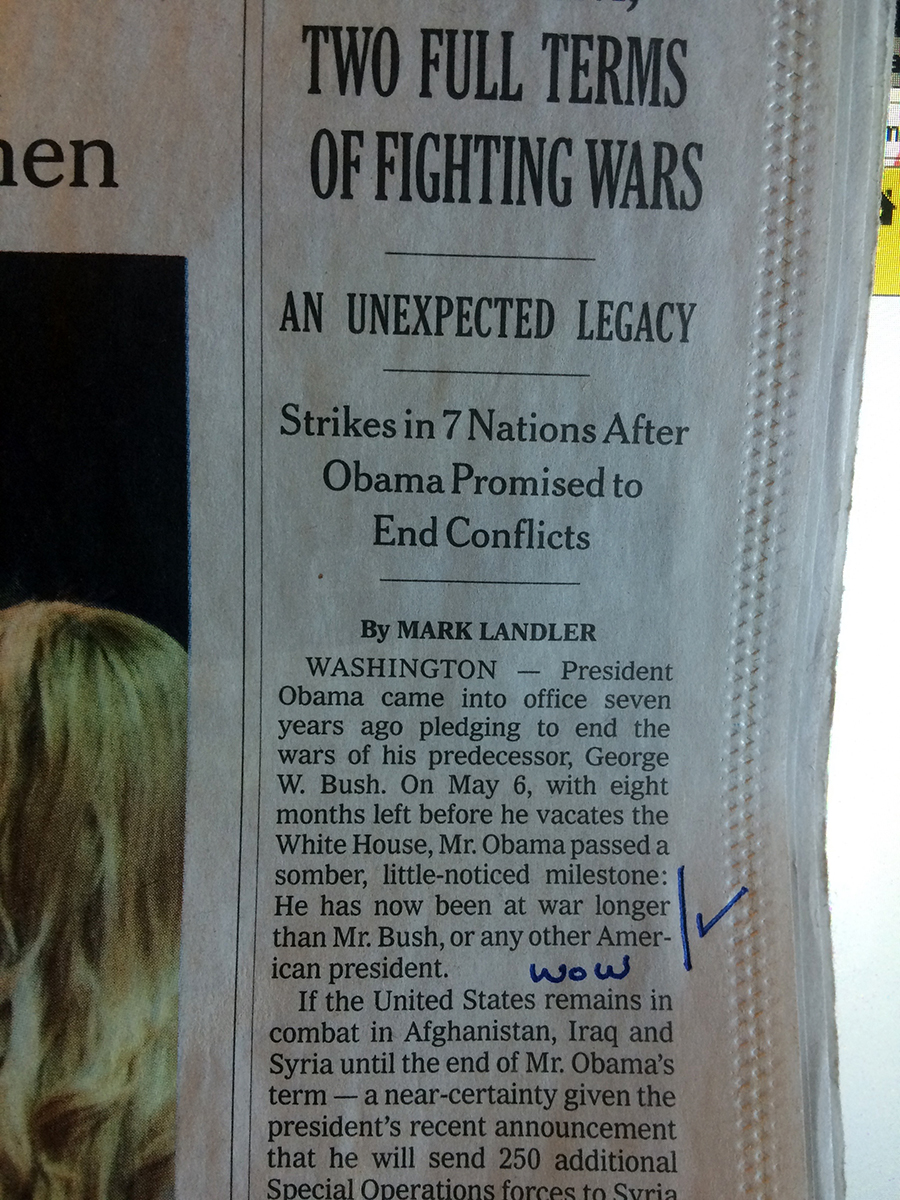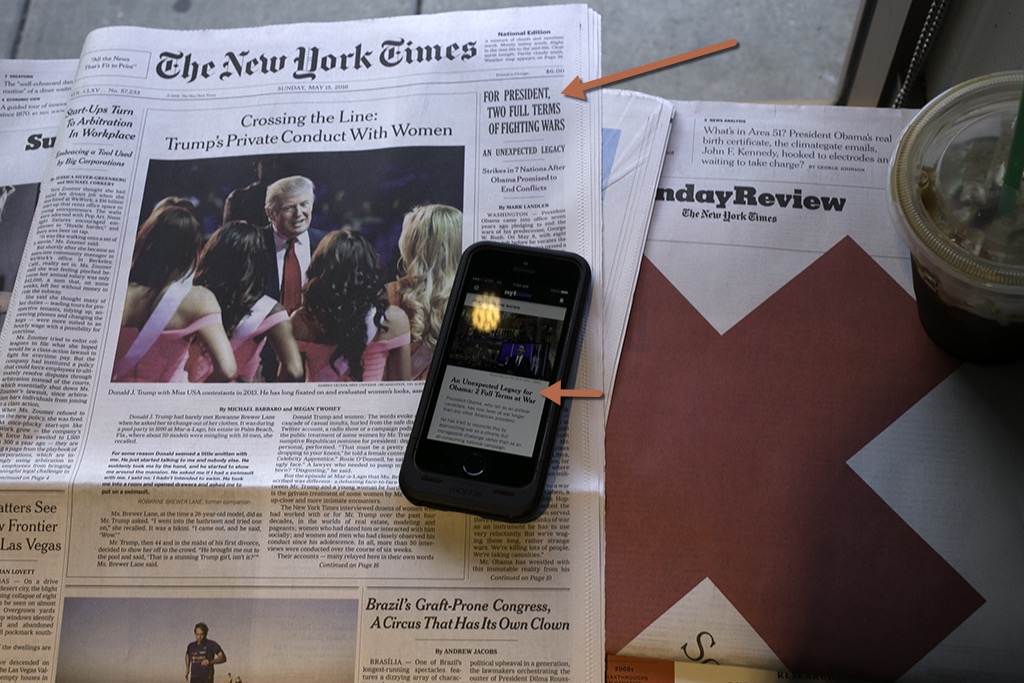For Obama, an Unexpected Legacy of Two Full Terms at War
Device #1: Print
Just out of habit, I always look to see what article is on Page A1, above the fold, upper-right-hand corner, of the New York Times every day, working under the assumption that the editors have deemed it an important story. That spot — above the fold, upper-right-hand corner — is usually reserved for breaking news of importance: a scandal, war-related news, politics, a new virus. “For Obama, an Unexpected Legacy of Two Full Terms at War” seemed at first glance an analysis, not breaking news, and a historical analysis at that. I skimmed the first few paragraphs and then moved inside the Sunday paper, which is my usual practice (Starbucks, 7:15 a.m., window seat at the counter) because I want to see what is in the Sunday Review, the Styles section, and in the Sunday Magazine.
This is a kind of slow, reflective reading time for me. I watch people go by, read some, people-watch for a while, read some more, drink my coffee, day-dream, read some more, drink more coffee, and so on. 
Several hours later, in my office, I read the article more closely, underlining phrases that stood out to me, and highlighting a couple that seemed important. “Important” might be relative here: I have some prior knowledge that Obama campaigned for president as an anti-war candidate, and as a member of the state senate in Illinois took a public stand against the Iraq War in 2007.
One of the first details I noted is that Obama was not interviewed or quoted in the article, which is probably irrelevant because he’s not usually quoted in these kinds of articles, but as a reader, I did find myself wondering, what would he say? How would he respond? I also noticed a comparison and contrast, where the writer solicits views from Obama’s critics, and then in the next paragraph, discusses George Bush’s “visceral desire to win.”
I found my interest and commitment to the article lagging right around the middle of it — “Seventeen months later, Mr. Obama halted the withdrawal…” — but because I was aware enough of that in the moment, I dug deep, as they say, and tapped into some persistence to finish.
The accompanying image on p. 10 is notable — it gets as much space, almost 50% — as the text. And then within the image, which is really an interesting choice, we see the digital-screen version of Obama, rather than the on stage in-person Obama. The mural in the hall gets as much real estate as Obama, which cannot be by accident. (Found it! It’s an 85-foot mural by Henrik Sørensen, “The People at Work and Celebrating.” There went seven minutes of my life.)
I also noticed in the back of my mind while reading:
- We have some ideologically committed students in WRD104; I wonder how they might react to this article. I thought about this a lot while reading.
- Still can’t reconcile its Page A1, above the fold, upper-right-hand corner placement.
- Always recalling the quote “No one ever wins a war, and wars are never over. War never ends.”
Device #2: iPad


